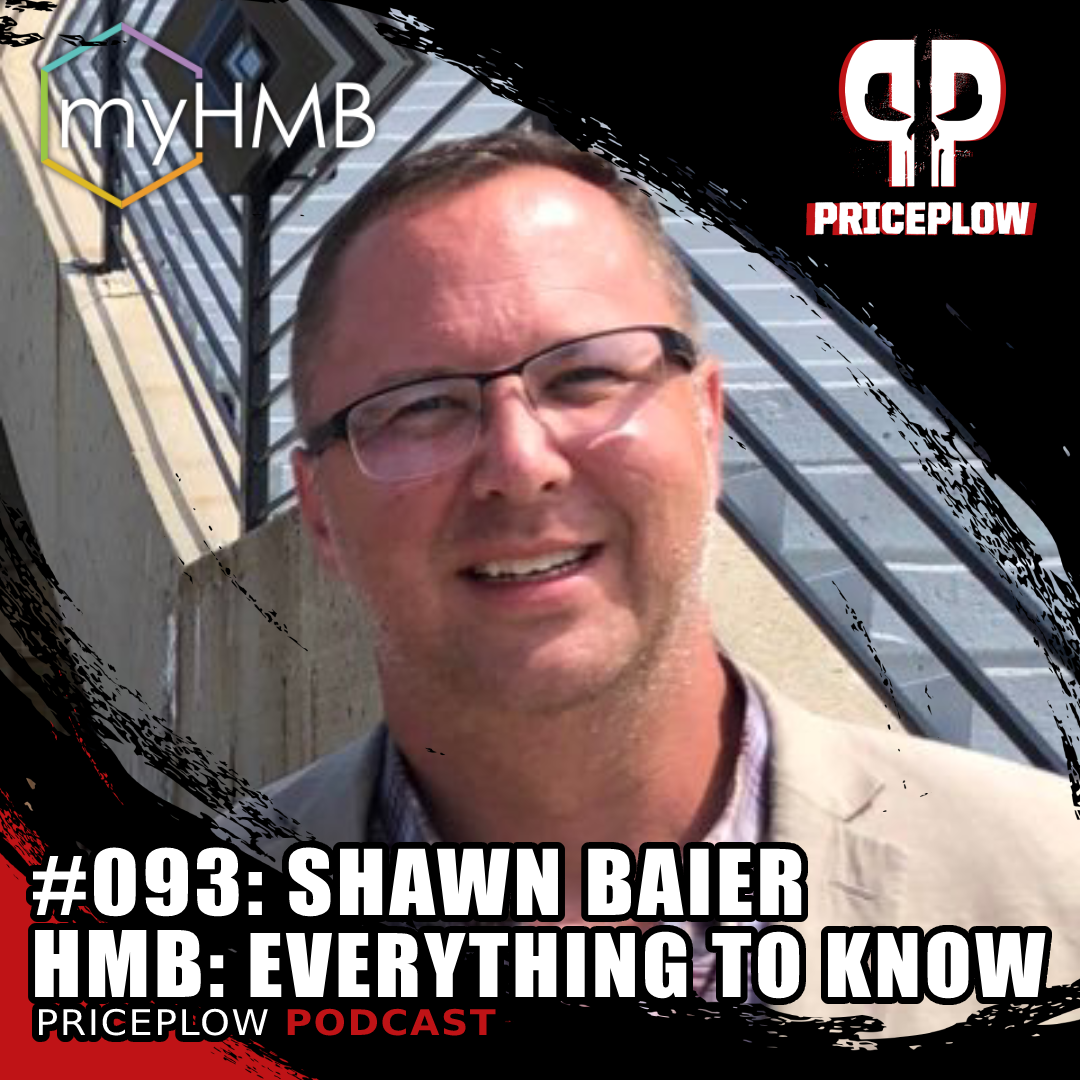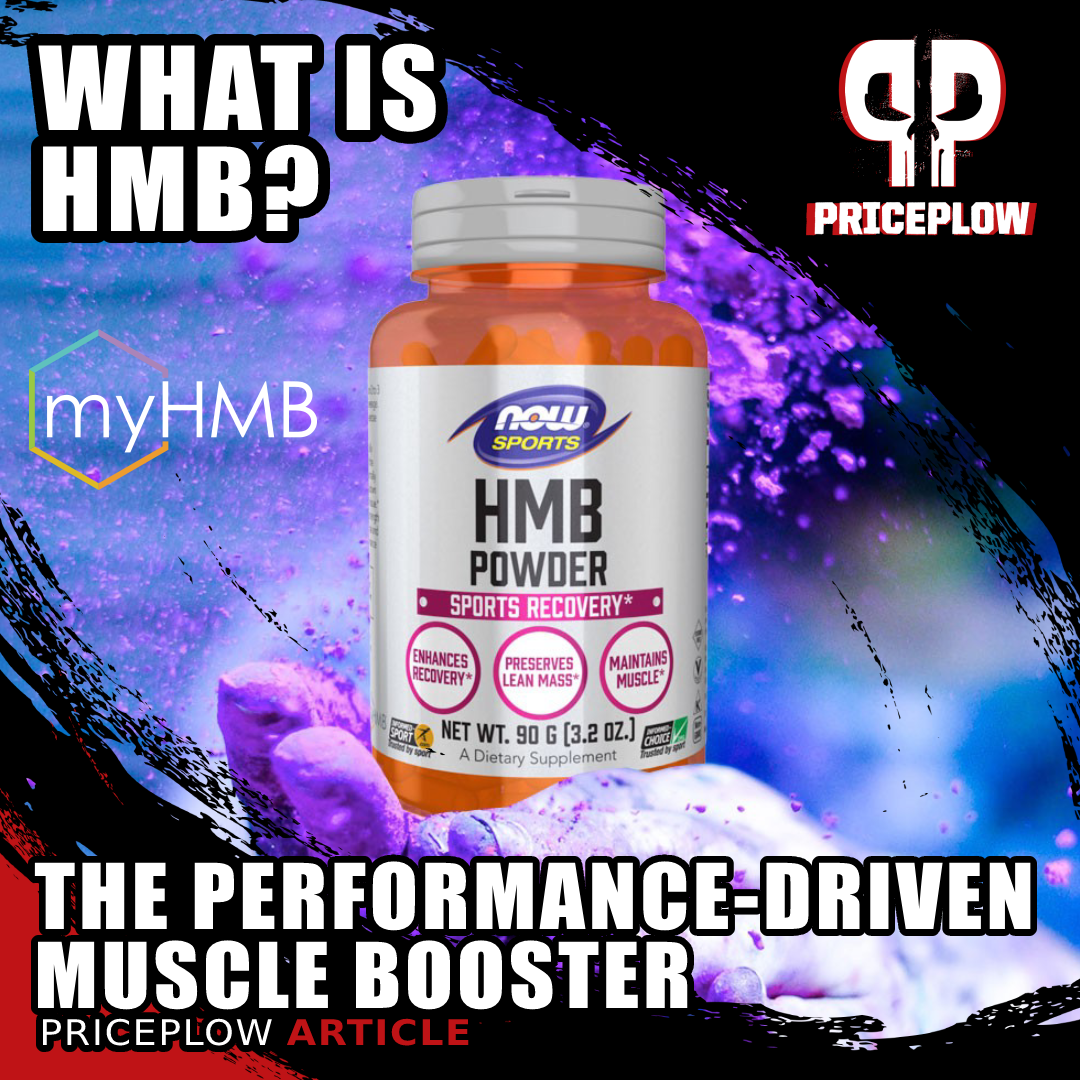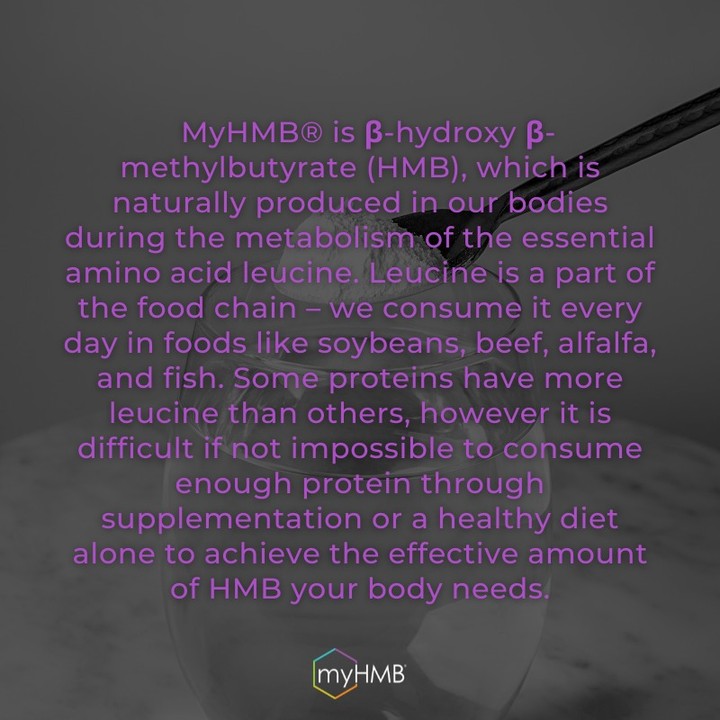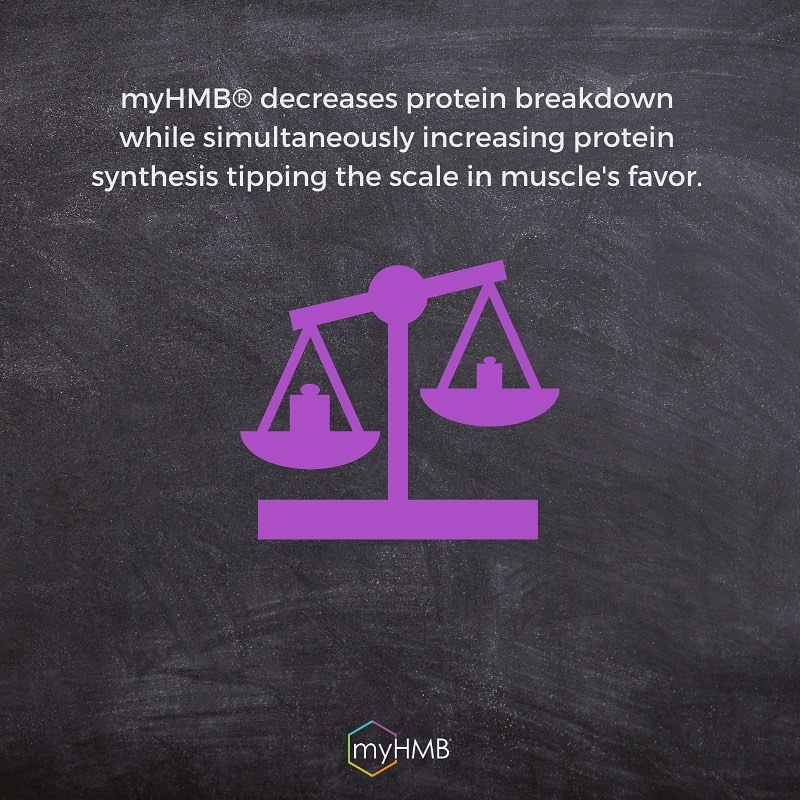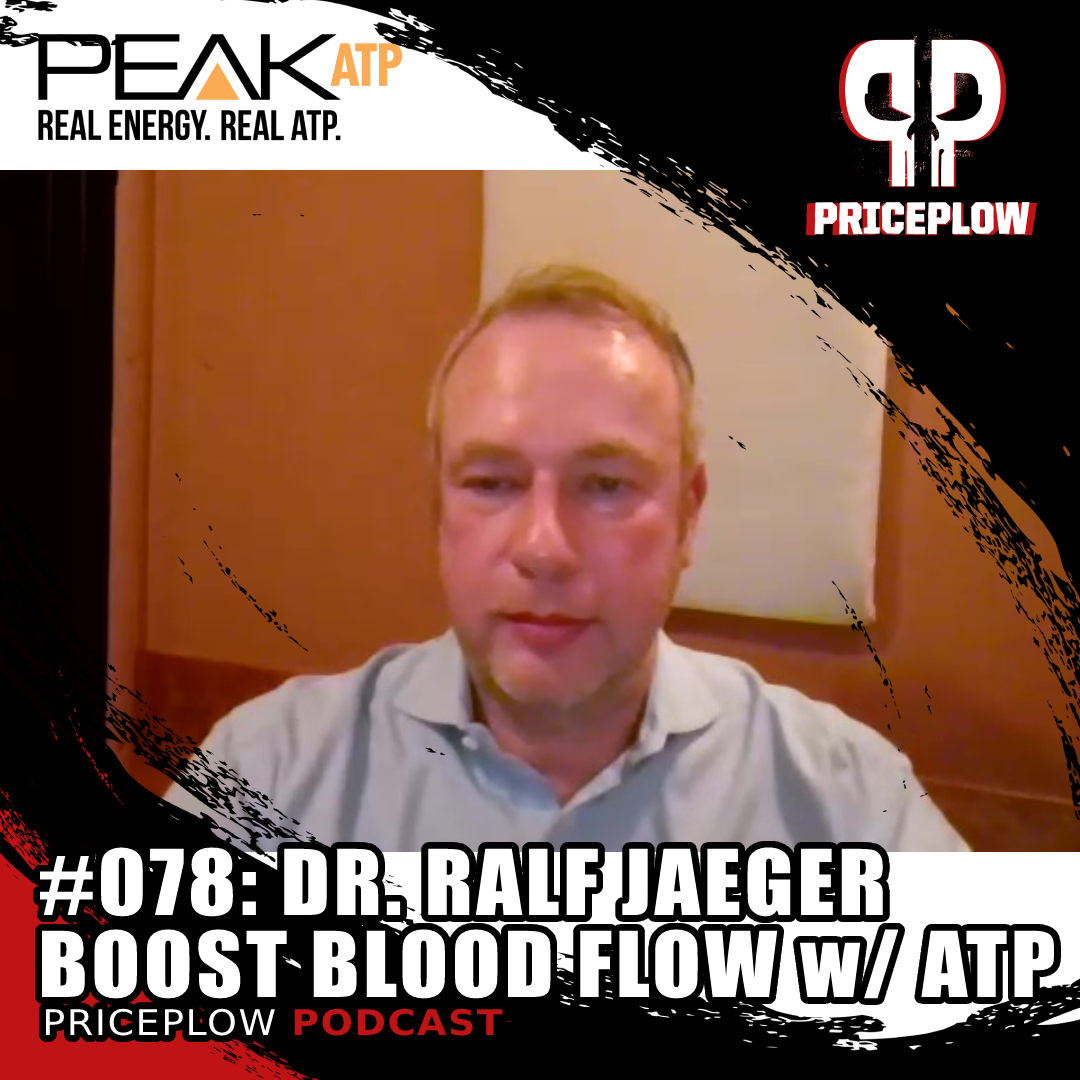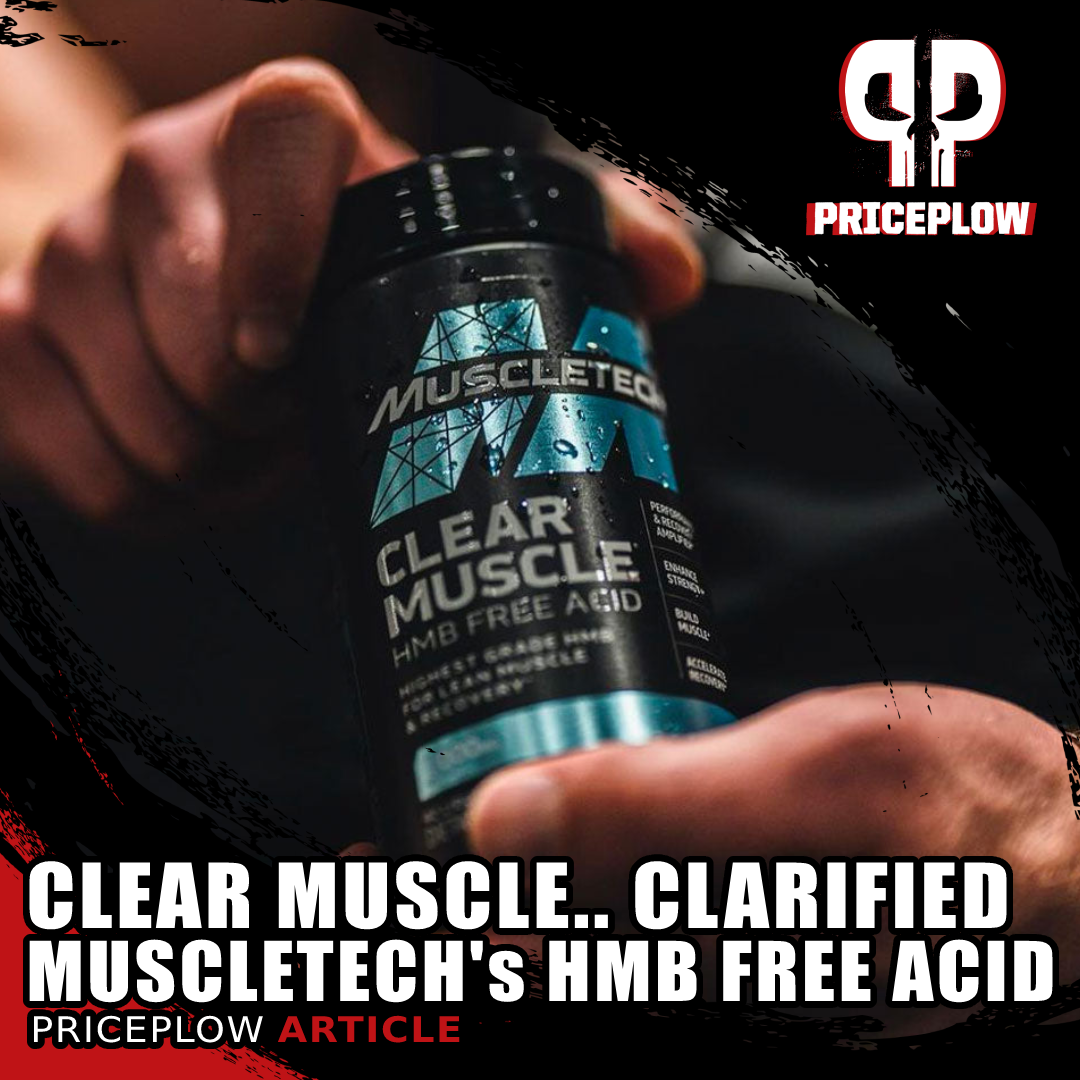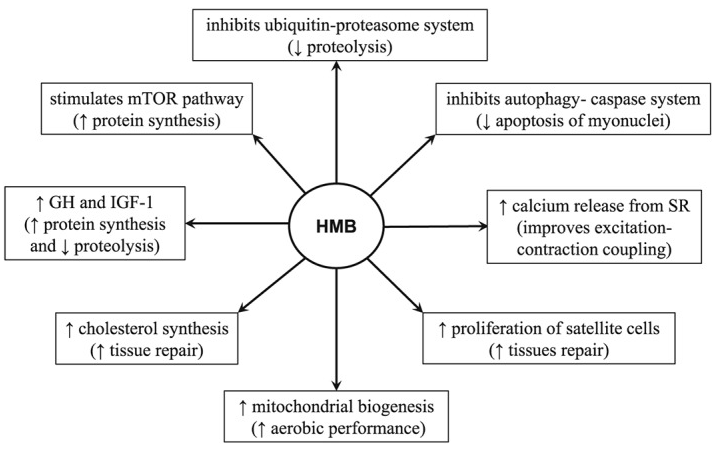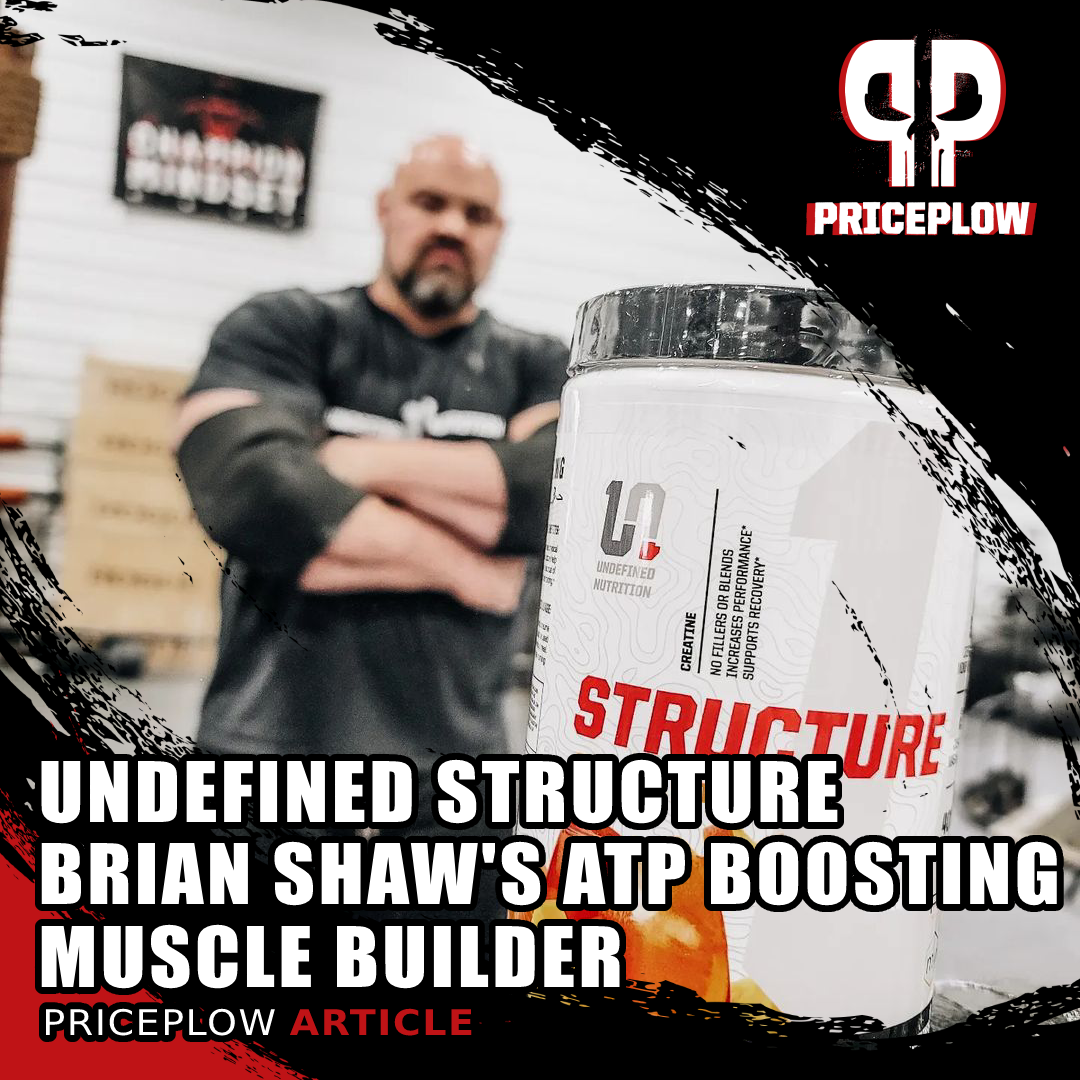https://blog.priceplow.com/podcast/shawn-baier-hmb-093
We've lately seen a lot of buzz about β-hydroxy β-methylbutyrate, otherwise known as HMB. After diving deep into the ingredient -- which has been with us since the 1980s but wasn't fully understood or marketed correctly in those early decades -- we're glad to see it making a comeback with supplement formulators who are using it correctly. In fact, we recently published our ultimate guide to HMB titled "HMB (β-hydroxy β-methylbutyrate): Performance-Driven Muscle Supplement", explaining when and how the leucine metabolite is used best.
In the above article, we review the history of HMB and go over some of the methodological flaws that led to inconsistent results in HMB studies -- including one "HMB study" that didn't even contain any HMB at all! As you'll see in today's podcast, this ingredient has been through quite a saga – which is why we're very excited about our PricePlow podcast guest today!
To give us the real story, we had Shawn Baier, a sports nutrition scientist and former competitive powerlifter who's been working with HMB since the very beginning of its rise in the late 80s and early 90s.
Podcast: Play in new window | Download (Duration: 1:45:43 — 105.4MB)
Subscribe to the PricePlow Podcast on Your Favorite Service (RSS)
Detailed Show Notes with Shawn Baier: The Resurgence of HMB
-
0:00 – Why Are We Talking About HMB?
Brian Shaw's Undefined Nutrition recently came out with a supplement (Undefined Structure) that contains both PEAK ATP and HMB. PeakATP has been a hot ingredient lately, but questions about HMB from earlier controversies linger, so we want to talk about it.
-
0:50 – Shawn Baier Introduction
Shawn Baier has been in the supplement industry since the early 1990s, and has been studying HMB since his college undergraduate days. He has experience working in strength and conditioning and in sports supplement laboratory research. After completing advanced research degrees, he got his start at Metabolic Technologies, where he worked in R&D and research-based marketing. He holds an MBA and a Master's Degree in Exercise Physiology and Biochemistry, and has competed in collegiate track and field and powerlifting, as well as Strong Man events.
-
3:10 – Trends In the Supplement Industry
The 1990s are when Shawn noticed that supplement formulators were making more research-based decisions about what ingredients to use. Not everybody, though – there's been a fork in the supplement industry, with some emphasizing research and others continuing to make spurious or drug-like claims.
-
3:30 – History of HMB
In Shawn's view, inattention to research is what plagued HMB the first time around – it inevitably fell short of wildly spurious claims made by companies with little regard for experimental rigor. One of the reasons that Metabolic Technologies got excited about HMB is that they've spent a lot of time researching this ingredient themselves. Ben agrees that there's a disconnect between supplement research and industry practice.
-
4:45 – History of Powerlifting
Shawn and Ben talk about the history of powerlifting and touch on some current trends. Shawn still lifts, but no longer competes as a powerlifter.
-
8:15 – Some PricePlow History
Mike realized PricePlow needed to get into science-based content in the mid-to-late 2000s when he saw consumers asking to see the science behind certain supplements, and supplement brands mostly refusing to share it.
-
8:45 – Introduction to HMB
Although it first came on the scene circa the 1990s, HMB's history goes back further than that. There's nobody to better talk about it than Shawn, who's seen it all with this one, as we'll learn.
-
10:00 – Synchronicity in Research
Read the full story in PricePlow's main HMB Supplement article.
As is so often the case in scientific research, HMB was being worked on simultaneously by at least two different research teams in the early 90s – one (Dr. Nissen's) came across HMB working on BCAAs in animal nutrition,[1-4] while another did so in clinical studies on BCAAs, especially in the context of preserving muscle health under unfavorable conditions (post-surgical convalescence, for example).[5-7]
-
10:45 – BCAA Metabolites Research in the 1980s
When the two teams first met in the 80s, they had realized while comparing data that BCAA metabolites must be playing a signaling role, and that's what ultimately led to the discovery and study of HMB.
-
12:00 – How HMB Became A Human Supplement
Although Dr. Nissen was doing his research in HMB on animals,[1-4] the economics of using it for meat production just didn't work out. Thus, he focused more on the human applications of HMB.[5,7-10] Eventually, the sports nutrition supplement industry came knocking.
-
15:45 – HMB In Context
About 5% of leucine breaks down into HMB. Below, we'll discuss HMB vs. Leucine -- and how 5% from most diets simply isn't optimal, so we can supplement more!
After more development and reviewing of HMB research thanks to supplement industry research, it became clear that HMB was a great muscle protective molecule, useful in any case where a stressor causes muscle damage to increase and muscle synthesis to decrease. Intense training is a great example of this, which is why HMB could be a great supplement for athletes.
-
16:00 – Dual Effect of HMB
HMB doesn't just reduce muscle breakdown – it also improves cell membrane integrity by supporting cellular cholesterol production.[11,12]
-
17:15 – Partnership With TSI Group, Ltd.
Being a relatively small research-focused company, Metabolic Technologies wasn't well-equipped to handle the sale and distribution side of bringing HMB to market. This made their partnership with TSI Group -- the sponsor of this episode -- only natural.
-
17:45 – The Medical Importance of Muscle Health
Although not typically thought of as a health category, muscle health actually has a major influence on the severity and progression of several serious diseases, which gives HMB potential clinical applications.
-
18:05 – The Inevitability of Muscle Loss
Although some conditions of aging aren't inevitable, everybody loses some muscle beginning around age 35.[13,14] Although exercise can stave this off to a degree, compliance with exercise in older populations is infamously low, which creates demand for compounds like HMB.
-
18:45 – The Importance of Prevention
When it comes to muscle loss, early prevention is best – minimizing loss of muscle in middle age can substantially improve quality of life for the elderly.
-
19:15 – Economies of Scale in HMB for Agriculture
Thanks to partnership with TSI, Metabolic Technologies is able to produce HMB much more cheaply than before. This makes animal agriculture applications more feasible.
-
20:45 – Why Arginine and Glutamine in early HMB research?
Although arginine and glutamine have been somewhat cast aside by the sports supplement industry, Metabolic Technologies thought it important to include these – as well as lysine – because of some specific deficiencies in older adults, AIDS patients and those undergoing treatments like chemotherapy.
-
22:30 – Why Is Lysine Important?
Although most people don't have to worry about getting enough lysine thanks to its abundance in common foods, Metabolic Technologies found in the course of its research that older people are at risk of both lysine deficiency and overall protein deficiency.
-
27:18 – Why Muscle Growth Signaling Molecules Like HMB Matter
Unfortunately, just eating more protein is not necessarily a solution for muscle loss – with aging and disease the ability of your body to metabolize protein can be compromised, meaning it matters little how much you eat. The power of HMB is it helps restore your body's ability to utilize dietary protein through its anabolic signaling functions. What makes HMB unique as a supplement is the extent of its ability to reduce muscle breakdown.[15] Shawn makes the analogy that if dietary protein is the raw material for cellular construction, HMB is like the construction workers.
-
31:15 – HMB’s Role In Tissue Remodeling
Echoing the analogy made by Shawn, Ben explains how in his GNC days, he used to compare BCAAs (remember – a source of HMB!) to construction workers and the other amino acids to the brick and mortar of the building under construction.
-
33:00 – Protein Quality
Shawn points out that although overconsuming protein is probably a good idea for athletes, total protein intake isn't the whole story – the quality of the protein you eat matters a lot too. Lean meats are a better choice than Slim Jims.
-
34:45 – Eat Quality Food!
Ben shares his recent experience of performing much better in the gym after he stopped worrying about meal timing and tracking macros, and just focused instead on eating high quality food. Shawn points out that supplements are just that, supplements – you can't make up for a bad diet or poor lifestyle practices by taking lots of supplements.
-
36:00 – The Problem With Some HMB Studies
Shawn points out that many of the early studies on HMB, which claimed it only works in novices, suffered from severe methodological flaws – lack of training intensity being the big one. Since training intensity manipulations are typically required to achieve hypertrophy in trained individuals, this is a major confounding factor in the results of these studies.
PricePlow covered this topic extensively in our recent HMB blog post. But as you'll hear shortly, the saga goes even deeper with some basically-fraudulent research using untested products...
-
38:00 - Great research bringing other great ingredients
In Episode #078 of the PricePlow Podcast, Dr. Ralf Jaeger dove into ATP, explaining how supplementing Peak ATP improves workout performance.
Shawn flashes back to Dr. Ralf Jaeger in Episode #078 who covered Peak ATP with us, as well as Episode #072 with Raza Bashir of MuscleTech and Shawn Wells of NNB Nutrition and ING2, who helped bring paraxanthine to market in MuscleTech EuphoriQ.
-
40:30 – Does HMB Matter, Practically Speaking?
Ben points out that although newer studies do show additional benefit compared to placebo in people training at a high level of intensity, high-intensity training will lead to gains in pretty much everybody. So, the question is, if we're training this way, do we really still need the additional marginal gains from HMB supplementation?
-
42:31 – More Methodological Problems With HMB Studies
Lack of sufficient exercise stimulus/intensity was not the only methodological problem with HMB studies that the team at Metabolic Technologies uncovered.
For instance (and this is covered in more depth ten minutes later in the episode), after finding one study in which athletes trained very hard and still saw no benefit from HMB supplementation,[16] they ordered the same material used by the study authors, tested it, and discovered that it contained zero HMB.[17] Obviously, this would invalidate the results of the study[18] -- but that original negative study has still not been retracted by the researchers. More on this later.
-
46:00 – Specific Examples of HMB-Beneficial Settings
To illustrate his point about HMB studies and exercise stimulus, Shawn points out that although studies in joggers don't show much benefit from HMB, studies on downhill running do show great benefit. Why? Because downhill running causes major muscle damage compared to jogging – which is where, again, HMB really shines.
-
49:25 – There Has To Be A Stressor!
Shawn takes us through a little more discussion of why stressors are so important for HMB efficacy – the bottom line is that since HMB's primary mechanism is decreasing muscle breakdown, it probably won't do much to improve outcomes unless there's some kind of stressor that increases muscle breakdown.
-
53:00 – The Negative HMB Study... That Used an Adulterated Supplement WITH NO HMB!
Ben backs up the bus, catching something Shawn quickly said 10 minutes earlier. This is where things get crazy.
In 2010, a study was published alleging that a dietary supplement with "3 grams of HMB plus α-ketoisocaproic acid" (KIC, another leucine metabolite) did not work.[16] Realizing that something wasn't right with the research, Metabolic Technologies went and tested the product that the researchers (David Nunan, Glyn Howatson, and Ken Van Someren) had used -- and they realized that there was zero HMB in the product they acquired![17]
Metabolic Technologies reported these findings in a letter to the editor of Journal of Strength and Conditioning Research.[17] As a result, the researchers of the faulty study acquiesced[18] -- but still haven't retracted the study!
Additionally, that material (from a company named MaxiMuscle, now known as Maxi Nutrition) is off the market no longer used in HMB studies – but again, it goes to show you how severe the methodological problems were with some influential HMB studies.
The reason Metabolic Technologies tested that sample is they assumed it contained HMB of inferior quality – they couldn't have dreamt that it contained zero HMB at all. Shawn points out that other sources of HMB have been found to contain elevated levels of mold, which is all the more reason to purchase HMB from TSI, a reputable supplier.
-
57:00 - Funding Studies and Efficacy Testing
On the point of adulterated supplements, Shawn discusses that all quality efficacy, toxicology, and safety data is done on their HMB (sold as myHMB and sometimes BetaTOR). There's a lot of bad products out there that doesn't pass spec, which is why it's critical for everyone -- especially researchers -- to use the real deal.
-
1:00:00 – Getting More Specific
Ben and Shawn start digging into specific HMB studies. One study from 1996 testing both 1.5 grams and 3.0 grams of HMB daily found gains in muscle strength and mass, an effect that appeared to be mediated by HMB's ability to decrease muscle damage markers. This made the athletes ready to train faster, which allowed them to push their training a little farther than they otherwise would.[5] Shawn points out that even in studies with moderate-intensity training protocols that don't get quite the gains from HMB we might expect, clear reductions in muscle damage are still observed when HMB is used.
-
1:05:00 – Vitamin D Levels, Another Confounding Variable
Shawn relates how after finding inconsistent results on muscle mass, strength and function within a study population of the elderly,[19] he and his team analyzed the data to control for vitamin D status, and found that those deficient in vitamin D did not respond to HMB supplementation, while those with adequate D did.[20]
So this is yet another confounding variable in HMB study methodologies – subsequent studies on HMB supplementation for elderly muscle loss have typically combined HMB with vitamin D to help control for this. Metabolic Technologies actually carried out a study designed to ensure vitamin D sufficiency in all subjects, and this study verified that adequate D improves response to HMB.[21]
-
1:13:00 – Diet and HMB
What is MuscleTech's Clear Muscle? It's a muscle health supplement using BetaTOR (HMB Free Acid) and some betaine to get you back into the gains territory after super hard training!
Ben asks Shawn how intensely Metabolic Technologies attempts to control dietary variables in their HMB studies. Shawn says that although they did take things pretty far in their 1996 study, and actually had players come in and eat every single one of their meals with the researchers.[5] Although ideal, this type of control is very resource-intensive and typically difficult to pull off without the huge resource pool of an institution like, say, Vanderbilt.
-
1:17:30 – Muscle Damage, Not Just For Athletes!
Shawn relates how in one of their studies, elderly subjects showed up with weirdly elevated muscle damage markers, even though they weren't undergoing athletic training. As it turns out, this muscle damage was being caused by shoveling snow during the Iowa winter, which drives home the point that even ordinary people – especially the elderly – may find themselves coping with muscle-damaging stressors that could be ameliorated with HMB. Shawn points out that this type of background confounding variable makes good randomization and blinding all the more important.
-
1:18:45 – Does HMB Help A Good Diet?
Mike asks how much HMB can help if you're doing everything perfectly with regards to intake – if, hypothetically, you were eating 300 grams of protein a day during an overreaching cycle, would HMB still help? Shawn says yes: again, HMB is a signaling molecule that can help you make the most of your dietary protein substrate.
HMB positively affects a number of important metabolic pathways that aid in muscle growth, fat loss, and recovery from exercise.[15]
Shawn argues that most of the anabolic effect from leucine and whey is actually caused by the HMB produced as these aminos are metabolized. He points to one study that directly compared HMB to leucine as evidence that HMB supplementation can offer unique benefits: in this study HMB prevented muscle breakdown, while leucine did not.[22]
Remember, best case scenario, 5% of leucine gets metabolized into HMB. So out of an extra 100 grams of protein, let's say that's about 10 grams of leucine, and of that, you get 500 milligrams more of HMB. That's just not enough according to the research if you really want to speed up recovery and anti-catabolism.
-
1:23:30 – Sales Pitch? No - The Science Speaks For Itself
When asked to give a sales pitch, Shawn declines, insisting that the science on HMB speaks for itself and should guide formulating and purchasing decisions. As an example, he talks about how Metabolic Technologies moved away from calcium HMB to free HMB based on pharmacokinetic data showing the latter's superior bioavailability.
-
1:26:30 – Vitamin D Deficiency a Bigger Problem Than You Think
Take your gains to the next level with Brian Shaw's ATP-boosting muscle builder supplement - which combines creatine, Peak ATP, and HMB.
Although it may seem like vitamin D deficiency would not be much of a problem for young athletes and hence, not much of a confounding variable in studies on this population, Shawn says it's a much bigger problem than most realize: even many athletes training in sunny locales like Australia and Miami have serious issues with vitamin D deficiency. Shawn thinks the vitamin D problem may actually be a bigger issue for HMB study methodologies than exercise intensity/volume manipulation.
-
1:32:15 – Protein Requirements and the RDA
Shawn talks protein requirements for different populations – for optimal recovery in intense sports like CrossFit, powerlifting, or bodybuilding, athletes need way more than the recommended daily allowance (RDA) of dietary protein. This is another potential confounding variable in HMB studies. Since HMB signals protein utilization, not consuming enough protein to keep up with overreaching demands could give a falsely negative impression of HMB's effects.
-
1:36:45 – Do Intensity/Volume Manipulation Problems Generalize?
Ben wonders if the body of research on other supplements could also be tainted by study designs with insufficient training or volume intensity.
-
1:36:15 – Less Is More When It Comes To Overreaching
Thank you Shawn for joining the PricePlow Podcast!
Shawn talks about how much overreaching we really need to make progress. He argues it doesn't take much – just enough to get an individual out of their comfort zone. There's no need to risk life and limb for athletic training. Shawn thinks apps that recommend training routines are generally a bad influence here – they encourage complacency and plateaus.
-
1:42:00 – HMB Instagram Accounts (@team_myhmb)
Shawn recommends that those interested in learning more about HMB follow the @team_myhmb account on instagram. Shawn himself isn't very active on social media, but we will definitely try to get him back on our podcast here and there. This was an incredible episode.
Useful Links
- Shawn Baier on LinkedIn
- myHMB.com
- HMB For Muscle Health In Animals
- PricePlow Article: HMB (β-hydroxy β-methylbutyrate): Performance-Driven Muscle Supplement
Thank you Shawn for joining us - you're welcome on the podcast literally anytime you have new research or news to discuss! Until next time, check out our HMB article linked above, and sign up for our TSI Group and MyHMB notifications below:
